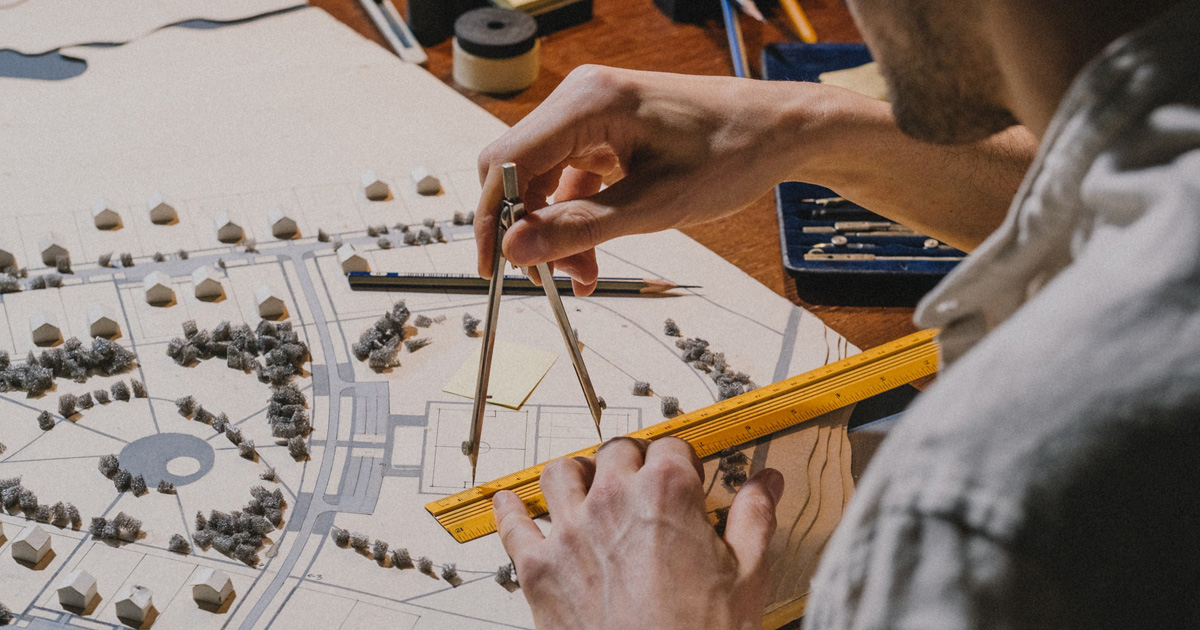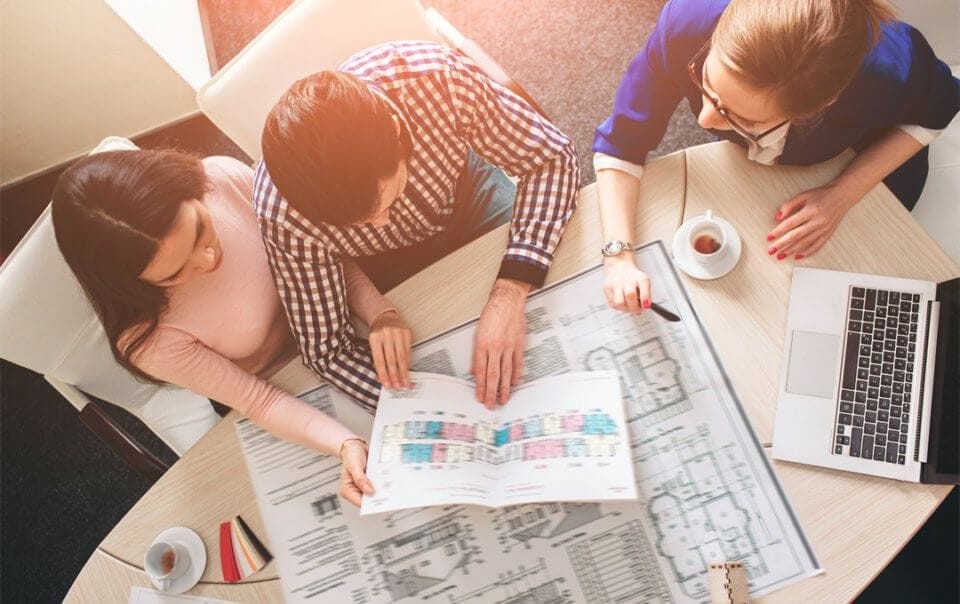Architect Rules for Designing Timeless Interiors
Architect Rules for Designing Timeless Interiors
Blog Article
The Function of Sustainability and Innovation in Modern Architect Practices
Sustainability and innovation are improving contemporary style in means you might not anticipate. By embracing green materials and wise technologies, engineers are not just producing structures; they're crafting settings that enhance our top quality of life.
The Importance of Sustainable Design
Lasting architecture is important not just for the environment but likewise for enhancing our quality of life. When you welcome lasting layout, you're not simply reducing your carbon impact; you're developing rooms that advertise health and wellness and wellness.
Furthermore, sustainable architecture frequently leads to stronger areas. When structures are developed with green techniques, they can influence others to do the same, fostering a society of sustainability. You'll observe raised home values and a greater feeling of pride in your surroundings.
Last but not least, by prioritizing sustainability, you're investing in the future. You're ensuring that future generations enjoy a much healthier world and vibrant areas. So, when you consider your next task, think of just how lasting architecture can boost your life and those around you.
Innovative Products Transforming Structure Practices
As you check out innovative products in architecture, you'll locate that biodegradable building and construction products are reshaping exactly how we consider sustainability. Recycled content advancements are giving brand-new life to waste, while smart product technologies improve building effectiveness. These advancements not just promote eco-friendliness however additionally push the borders of design.
Naturally Degradable Construction Products
While traditional building products typically add to environmental degradation, biodegradable construction products are arising as a practical option that changes building methods. You can discover options like mycelium, bamboo, and hempcrete, which not only minimize waste yet likewise promote sustainability. These materials damage down normally at the end of their lifecycle, reducing land fill payments. By incorporating naturally degradable alternatives into your styles, you're not simply enhancing aesthetic appeal; you're also making a positive influence on the world. Plus, they often need much less power to produce, additionally decreasing your project's carbon footprint. As you adjust to these innovative products, you'll find that they use longevity and flexibility, enabling you to create structures that align with modern worths of sustainability and duty.
Recycled Web Content Developments
Over the last few years, innovative products with high recycled material have reinvented building techniques, using architects amazing new alternatives - Architect. You can now include products like recycled steel, which not just reduces waste however also flaunts impressive toughness. Recycled glass is another wonderful choice, supplying aesthetic charm while minimizing environmental influence

Smart Material Technologies
Smart product innovations are reshaping the method you think concerning developing practices, offering vibrant remedies that adjust to altering conditions. These innovative materials, such as self-healing concrete and thermochromic glass, enhance structure performance and sustainability. By integrating smart materials, you can develop energy-efficient styles that react to their environment, reducing total energy intake.
The Integration of Smart Technologies in Design
As modern technology develops, incorporating smart options right into architectural layout ends up being crucial for producing sustainable and effective spaces. You can include smart innovations like constructing management systems, which enhance power usage and enhance passenger comfort.
Incorporating Web of Points (IoT) tools permits seamless interaction amongst numerous building systems, enabling you to make data-driven choices that boost capability. Smart materials that reply to environmental modifications can better enhance your design, offering vibrant remedies to ever-changing problems.
Power Efficiency and Renewable Resource Solutions
While lots of architects concentrate on visual appeals, prioritizing energy effectiveness and renewable resource solutions is important for lasting style. You can begin by including easy solar layout, which maximizes all-natural light and warmth, lowering dependence on synthetic lights and furnace. Make use of high-performance insulation and energy-efficient home windows to decrease energy loss.
Do not ignore sustainable energy systems-- set up solar panels or wind turbines to generate tidy energy on-site. You can also consider incorporating geothermal home heating and cooling systems for a much more sustainable temperature policy.
By selecting energy-efficient appliances and lights, you'll not just minimize energy intake yet likewise lower operational prices for developing residents.
Incorporating these concepts into your layouts not just benefits the environment yet likewise improves the structure's charm and worth. Inevitably, your commitment to power performance and renewable resource will certainly set your tasks apart in a competitive market.
Water Conservation Strategies in Modern Style
Integrating water preservation methods into modern-day architecture is essential for developing sustainable structures that reduce ecological effect. You can achieve this by incorporating rainwater harvesting systems, which save and gather rainfall for irrigation and non-potable usages. Executing low-flow components and wise watering systems also lowers water consumption, making certain effective use throughout the building.
Think about making use of drought-resistant landscape design, which needs much less water and promotes biodiversity. Integrating absorptive paving materials enables rain to infiltrate the ground, minimizing runoff and charging groundwater products.
In addition, installing greywater recycling systems can This Site repurpose water from sinks and showers for toilet flushing or irrigation, additional preserving sources.
The Impact of Biophilic Design on Wellness
Biophilic style brings nature inside your home, and you'll see its favorable results on your health and wellness and joy. By boosting interior air top quality and attaching you with natural environments, these spaces can transform your daily experience. Allow's check out just how integrating these features can increase your overall well-being.
Nature's Influence on Health
How does our environment shape our health? It can considerably improve your physical and mental health when you include components of nature into your surroundings. Biophilic layout, which stresses all-natural light, plants, and organic materials, cultivates a feeling of connection to the outdoors. This connection can minimize anxiety, boost mood, and boost cognitive function. You might locate that areas loaded with greenery encourage creativity and performance, making your everyday tasks really feel a lot more satisfying. Additionally, all-natural aspects can aid you feel more loosened up and hop over to here focused, promoting general well-being. By focusing on nature in your atmosphere, you're not just enhancing your space; you're also supporting your health and joy. Accepting biophilic design is an action towards a much healthier lifestyle.
Enhancing Indoor Air Top Quality
While many individuals concentrate on appearances and capability in layout, boosting interior air quality plays a necessary duty in your total wellness. By integrating biophilic style elements, you can improve air top quality normally. Focusing on these elements in your design will certainly not just raise your area but also advertise a sense of calm and well-being.
Link With Natural Environments
When you get in touch with natural elements in your room, you not just enhance its visual allure however also substantially increase your well-being. Biophilic layout motivates you to incorporate attributes like plants, all-natural light, and organic products. These aspects develop a relaxing environment, decreasing stress and anxiety and stress and anxiety. Research reveals that being around nature can enhance your state of mind and cognitive function, aiding you feel more effective and focused. When you invite the outdoors inside, you might observe better air top quality and increased convenience. Simple adjustments, like adding a living wall surface or large home windows, can profoundly affect your experience (Architect). Inevitably, integrating nature right into your environment leads you to a healthier, better lifestyle, promoting a much deeper connection to the globe around you.
Future Trends in Sustainable Architectural Practices
As the globe encounters pressing environmental challenges, designers are progressively welcoming cutting-edge approaches to sustainability that redefine how we design and build. You'll see a surge in biophilic style, integrating nature into metropolitan areas to improve wellness and minimize power usage. Smart modern technologies, like AI and IoT, are streamlining energy management in buildings, optimizing resource use, and decreasing waste.
Moreover, modular building and construction is getting grip, enabling much faster, more efficient structure procedures while minimizing ecological effect. Making use of sustainable materials, such as redeemed timber and recycled steels, is ending up being common method. As you check out these trends, expect check my site a change towards circular design, stressing the lifecycle of materials and promoting reuse and recycling.
These forward-thinking strategies not only address eco-friendly worries but additionally produce healthier, more resistant areas. By staying educated concerning these patterns, you can help form a sustainable future in architecture.
Regularly Asked Concerns
How Can Sustainability Affect Task Costs and Budgets?
Sustainability can considerably influence job costs and spending plans. You may locate that preliminary financial investments in eco-friendly materials or innovations result in long-term cost savings through power efficiency, minimized waste, and prospective government rewards, ultimately balancing the total costs.
What Qualifications Exist for Sustainable Style?
You'll discover a number of qualifications for sustainable style, including LEED, BREEAM, and the Living Structure Challenge. These accreditations aid you demonstrate your dedication to sustainability and can improve your task's reliability and interest clients.
Exactly How Does Neighborhood Culture Influence Sustainable Layout?
Regional culture forms sustainable style by showing area practices, values, and materials. You'll locate that incorporating neighborhood looks and techniques not just values heritage but also enhances the performance and acceptance of your building tasks.
What Duty Does Customer Education And Learning Play in Lasting Practices?
Client education's vital for promoting lasting methods. When you notify customers regarding advantages, expenses, and ecological effects, you equip them to make educated choices, promoting a collective technique that boosts the task's total sustainability.

How Can Architects Gauge the Success of Sustainability Efforts?
You can gauge the success of sustainability initiatives by tracking power consumption, evaluating product performance, and celebration comments from customers. Normal audits and comparisons against benchmarks will assist you improve your strategies and showcase improvements successfully.
By incorporating smart materials, you can produce energy-efficient styles that react to their setting, lowering total power intake.While many architects focus on aesthetics, prioritizing energy efficiency and renewable energy solutions is important for sustainable design. Biophilic design, which emphasizes all-natural light, plants, and natural materials, fosters a sense of connection to the outdoors. Biophilic layout urges you to include attributes like plants, all-natural light, and organic materials. As you explore these trends, expect a shift towards round style, highlighting the lifecycle of materials and promoting reuse and recycling.
Report this page